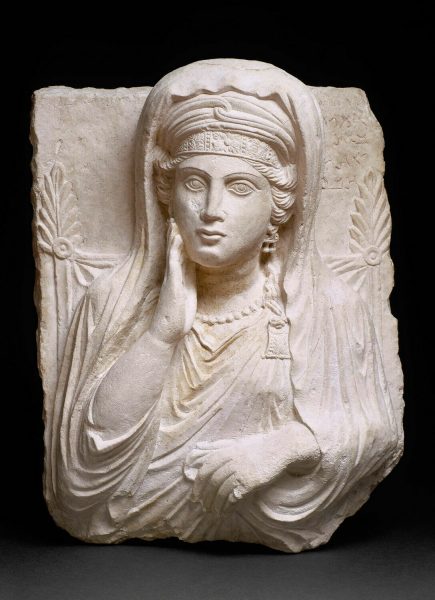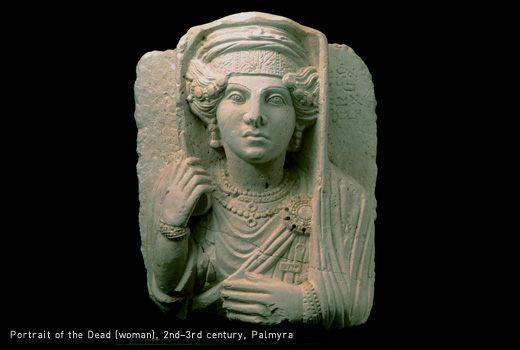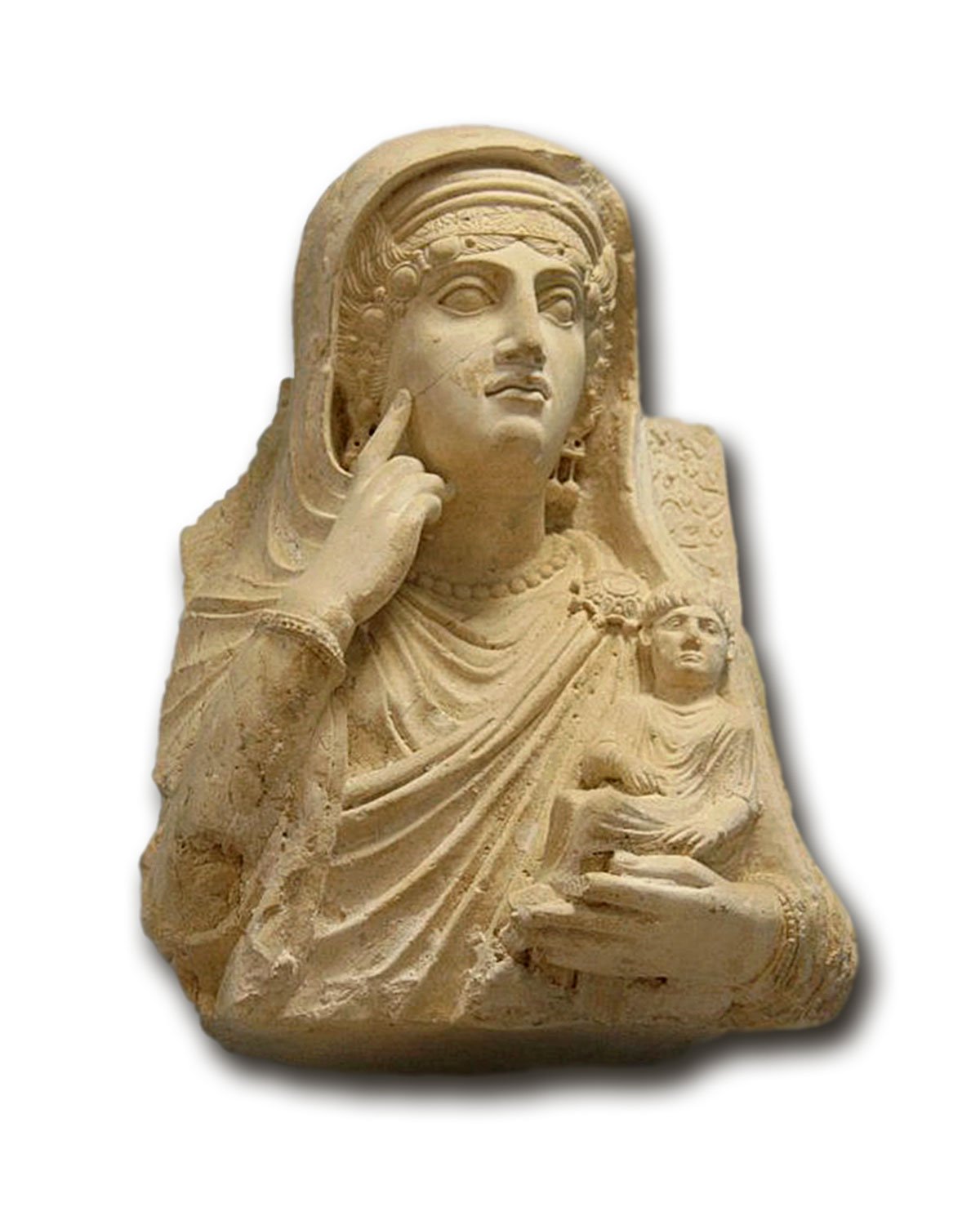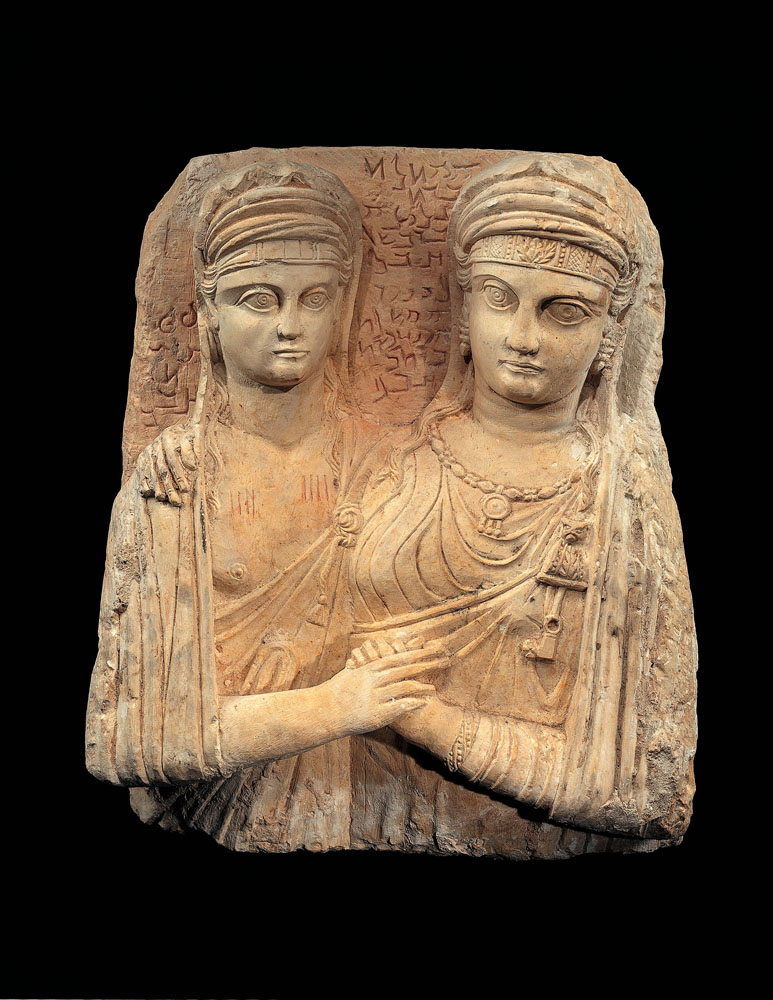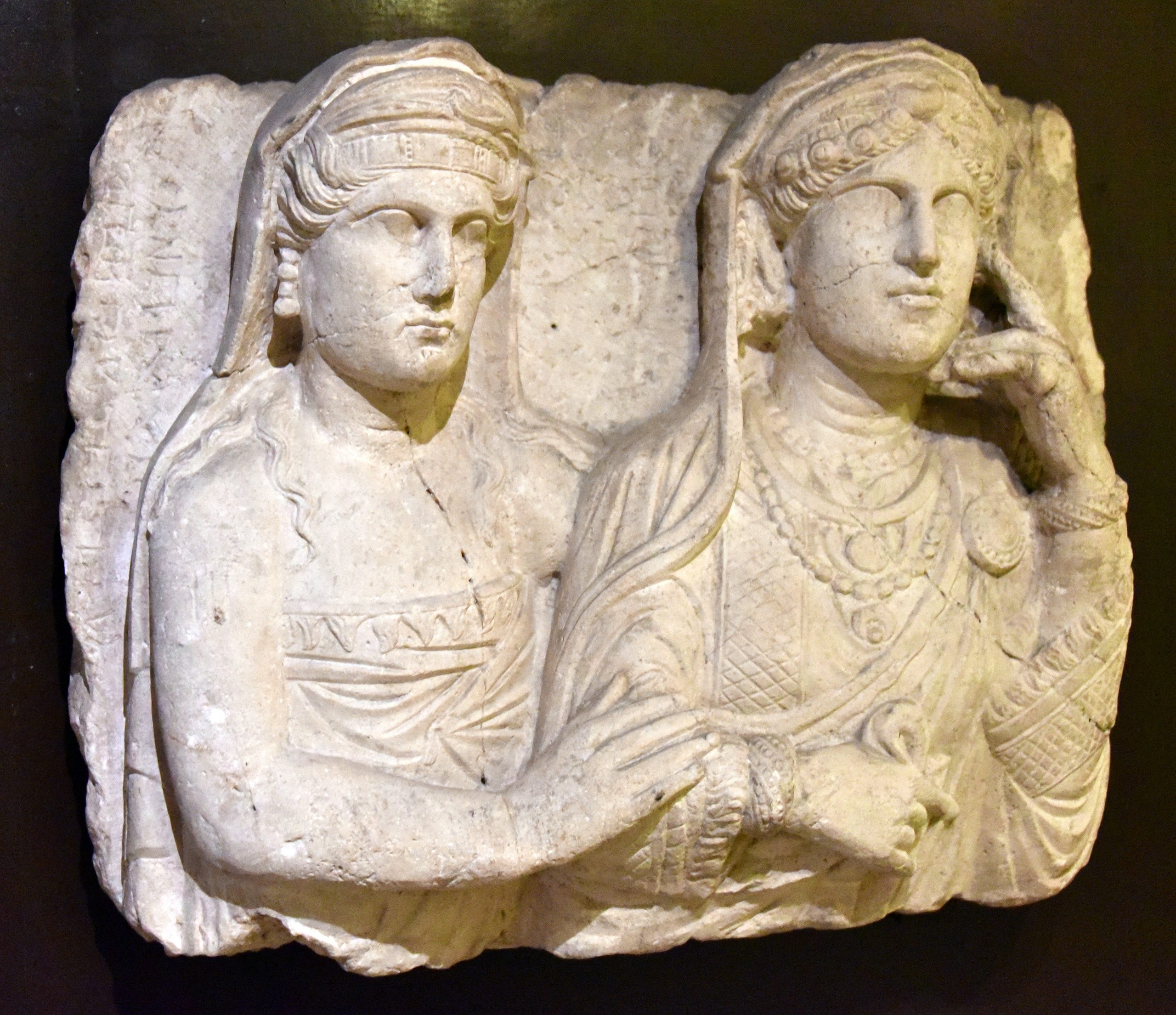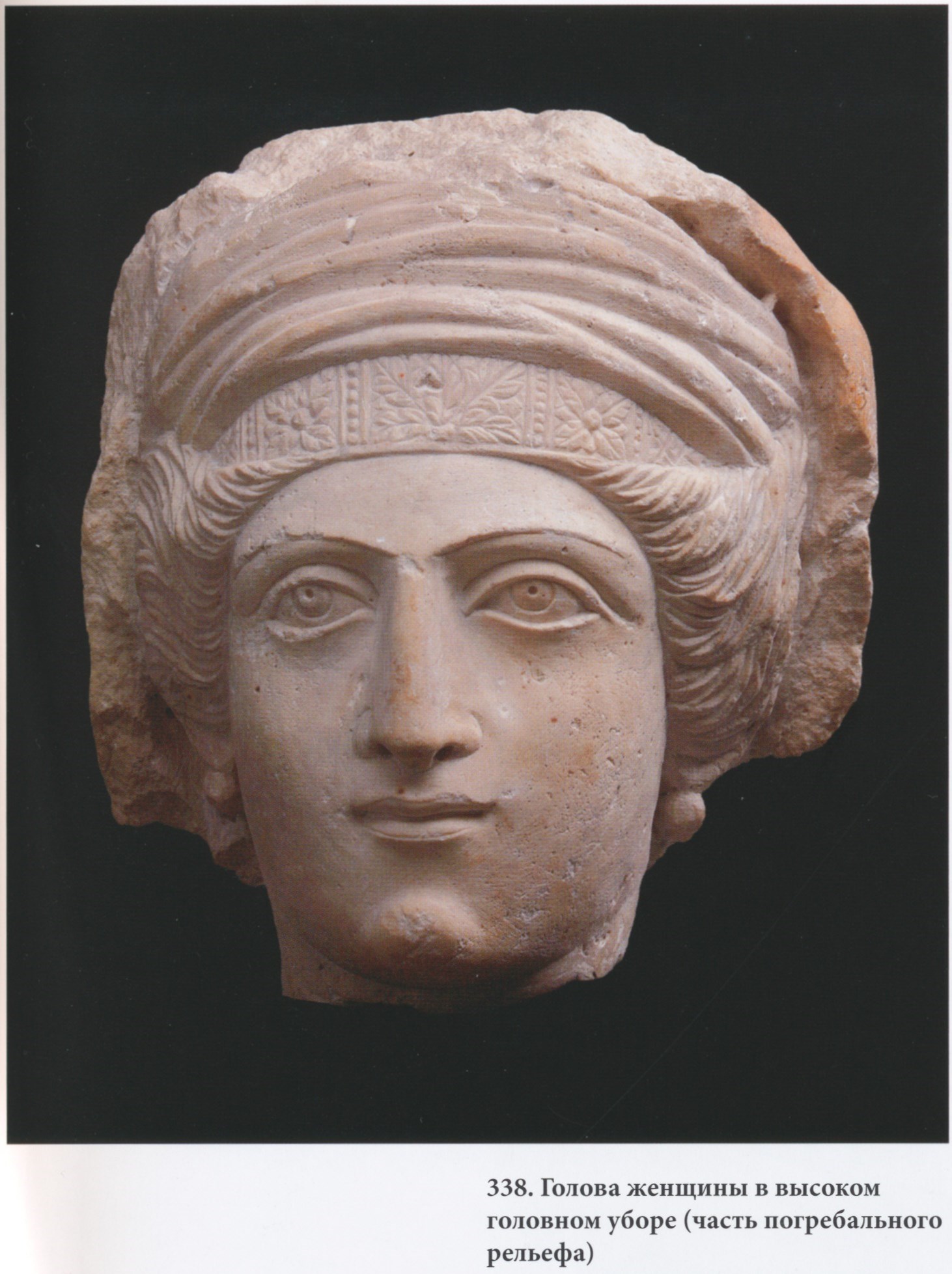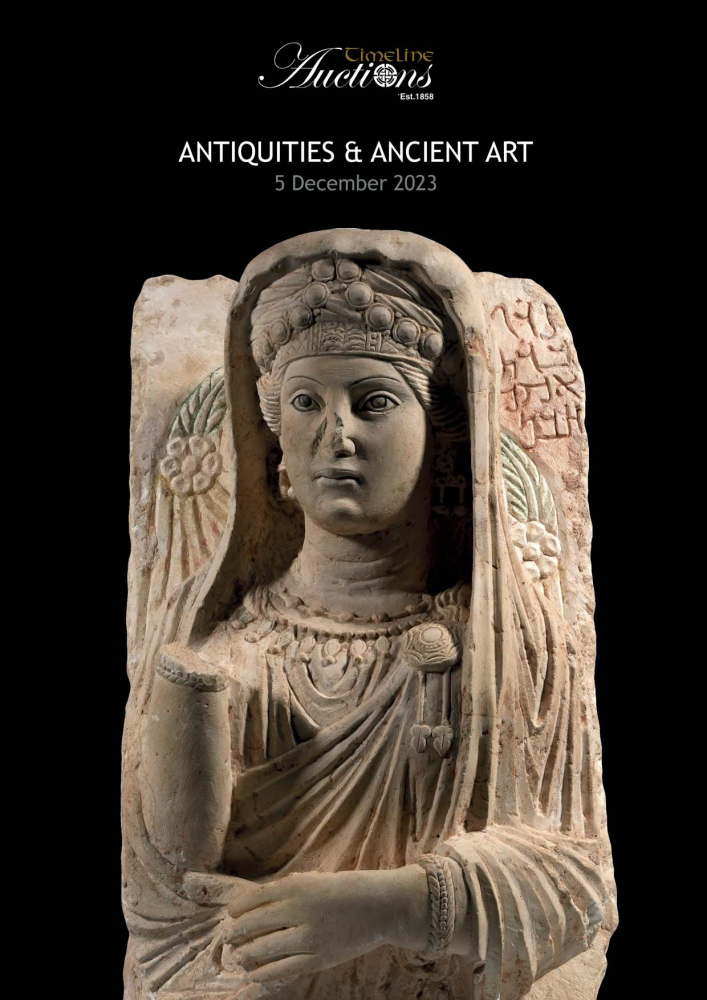
TimeLine Auctions Limited, 23-24 Berkeley Square, London W1J 6HE, UK
https://issuu.com/drcypher/docs/a154
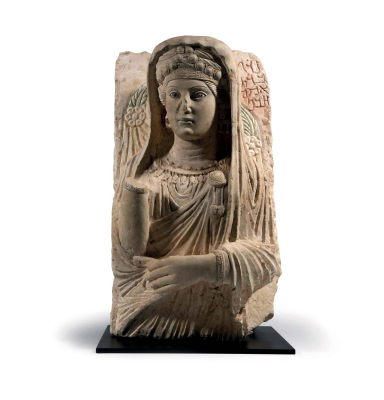
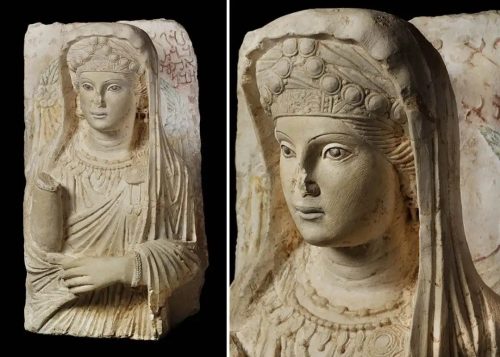
From a catalog:
“EASTERN ROMAN BUST OF THE DAUGHTER OF AQIMA 2ND-3RD CENTURY A.D.22½ in. (78.2 kg total, 57 cm high including stand)Modelled in the round with a fragment of stand to the rear; the figure carefully carved to exhibit the delicate facial features and elaborate hairstyle; the palla drawn up over the head and falling over the shoulders to the upper arms; a diadem to the brow with foliage and tendril detailing; elaborate earrings with dangles; necklace of fusiform and tubular beads and a longer one below with piriform plaques; large disc brooch to the left breast with dangles; peplos-style dress draped across the body beneath the palla; left arm bent and hand passing across the body to grasp the hem of the palla with a herringbone bracelet at the wrist; the palla displayed pinned with rosettes to the rear panel; with inscription of thirteen Palmyrene characters above the left shoulder ‘NRW’ // BRT // ‘QM’ // HBL’ meaning ‘daughter of Aqima’; traces of red and green pigment; mounted on a custom-made stand by Colin Bowles
Ltd.£20,000 – 30,000
PROVENANCE: From a private American collection, acquired in the 1970s.
Ex Leon Simard, a Trustee to the National Museum of Canada, prior to 1986. Acquired from Summer Gallery, 29 May 1986.
with Archaelogia Gallery, Canada, 1986 to present.
Accompanied by an Art Loss Register certificate number S00237794, dated 3 November 2023.
Accompanied by an academic report by Dr Raffaele D’Amato.
This lot has been checked against the Interpol Database of stolen works of art and is accompanied by search certificate no.11825-207620.
FOOTNOTES: The sculpture is a good example of 2nd-3rd century A.D. Palmyrene female funerary portrait types. The amount of jewellery displayed in these portraits could be a direct reflection of the wealth of the family, and certainly they reflected the jewellery possessed by the owner of the grave.”



